Thickness sander plans
These plans are based on Pat Hawley's thickness sander.
Please note that I have not built this sander myself, but I know the design works from
Pat's sander. Unlike some of my other
woodworking machine plans, I didn't actually build this sander myself,
so it wouldn't be right to charge for them.
Click on any image for a larger view.
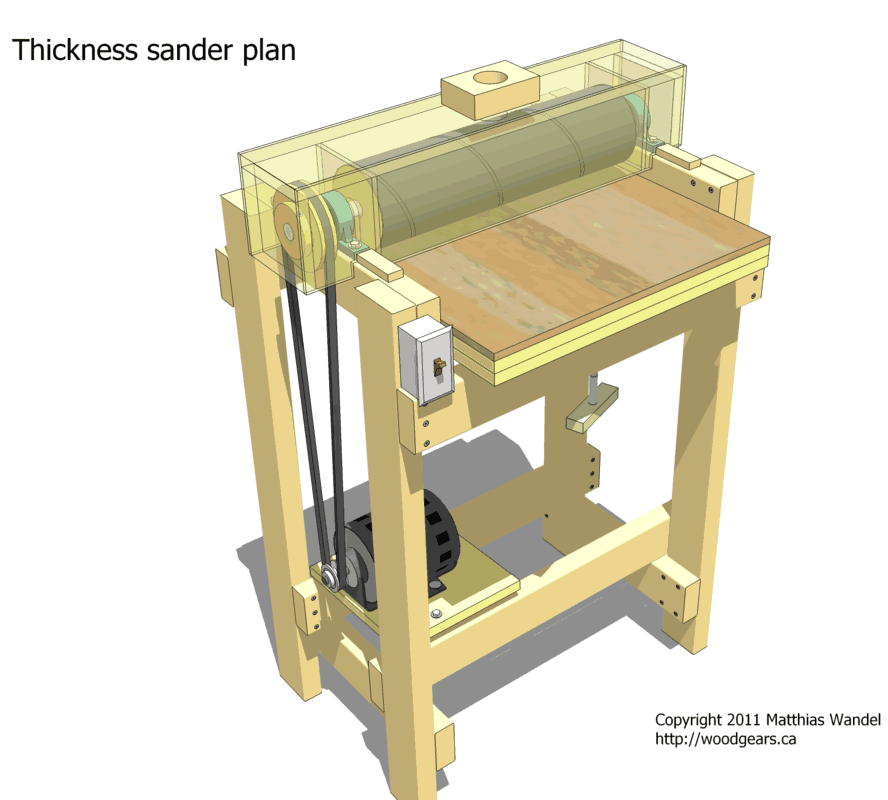
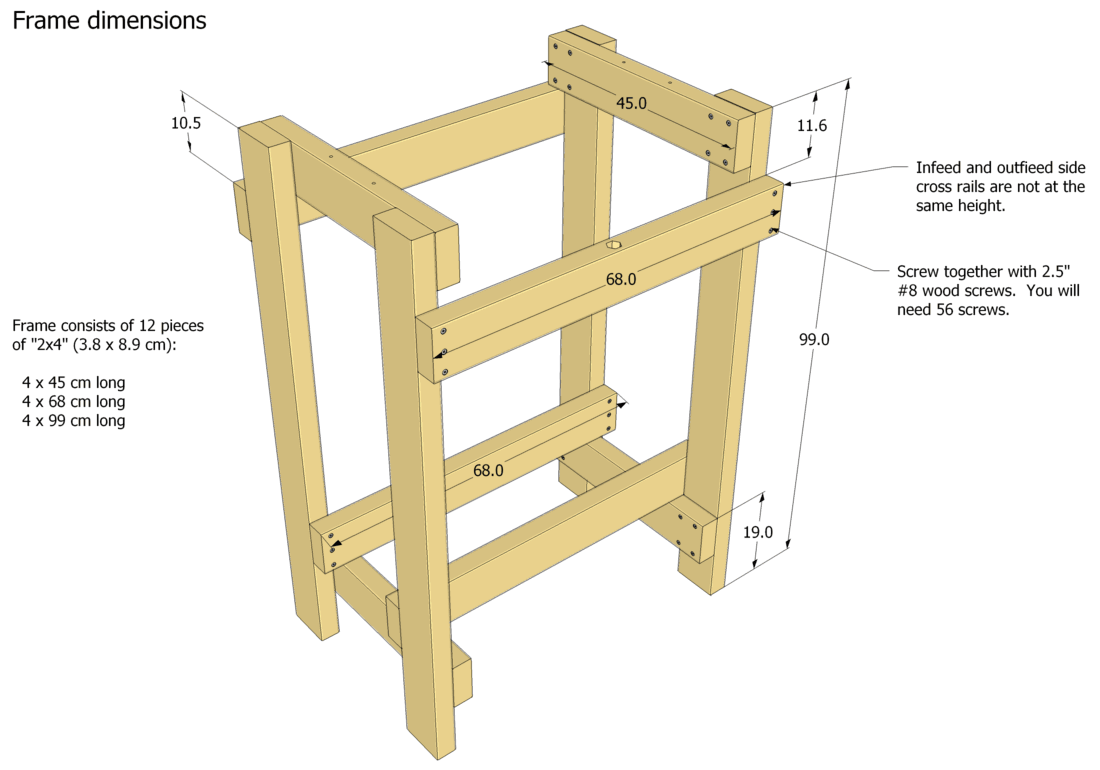
Frame
The whole frame is just screwed together from 2x4's. Four 8' 2x4's should be enough,
but it may be better to buy two 8' 2x8's to get better quality lumber.
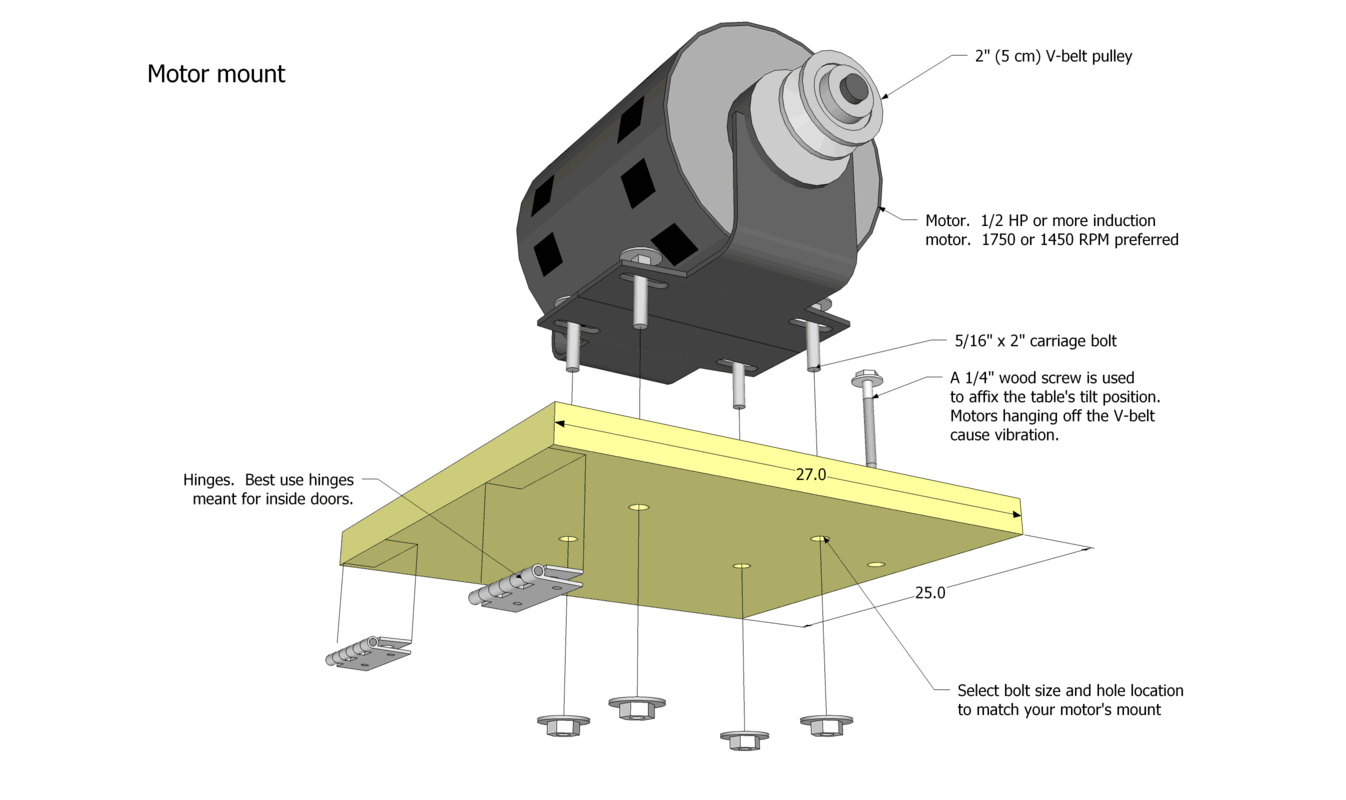
Motor mount
The motor tilts on a hinged piece of plywood to set the belt tension. It's best to
make sure the motor can't move once the desired belt tension is set, as the running v-belt
will cause the motor to move up and down and shake the whole machine.
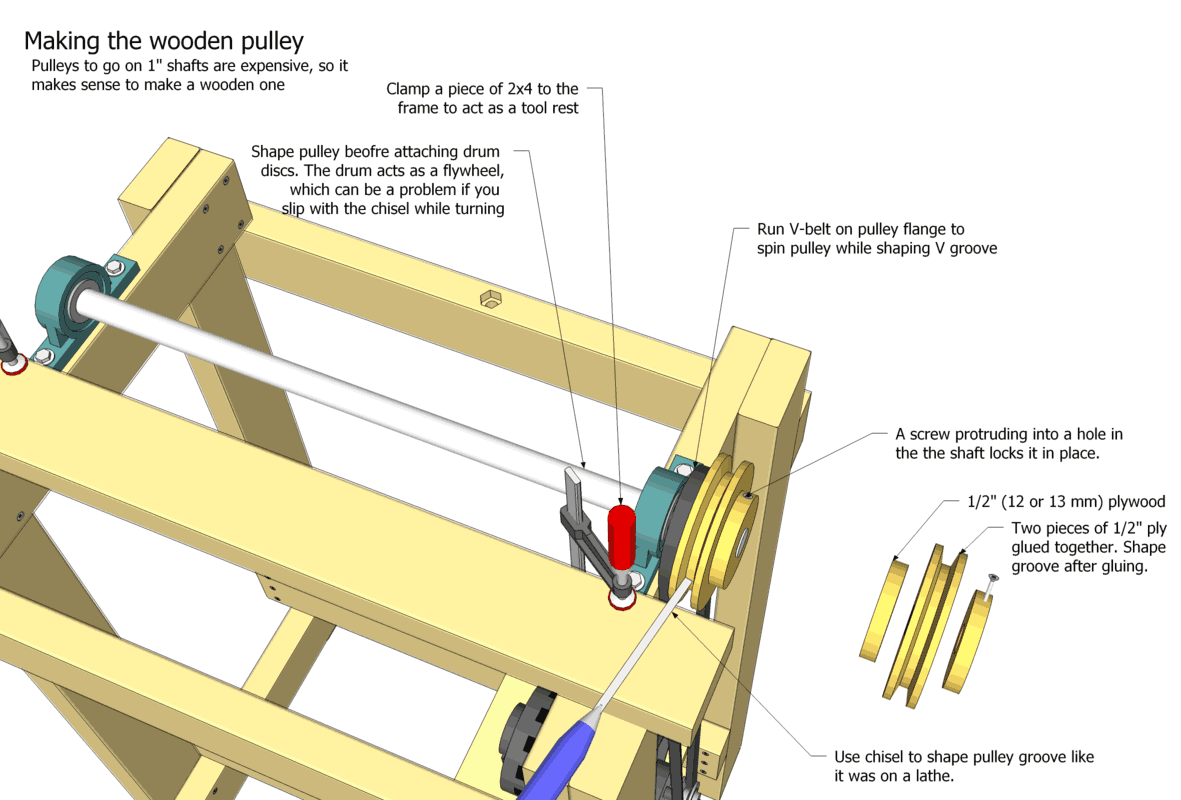
Making the wooden pulley
Although you could buy the right size of pulley for this sander, pulleys that attach to 1"
thick shafts are in a higher price class, so it's best to just make one out of wood.
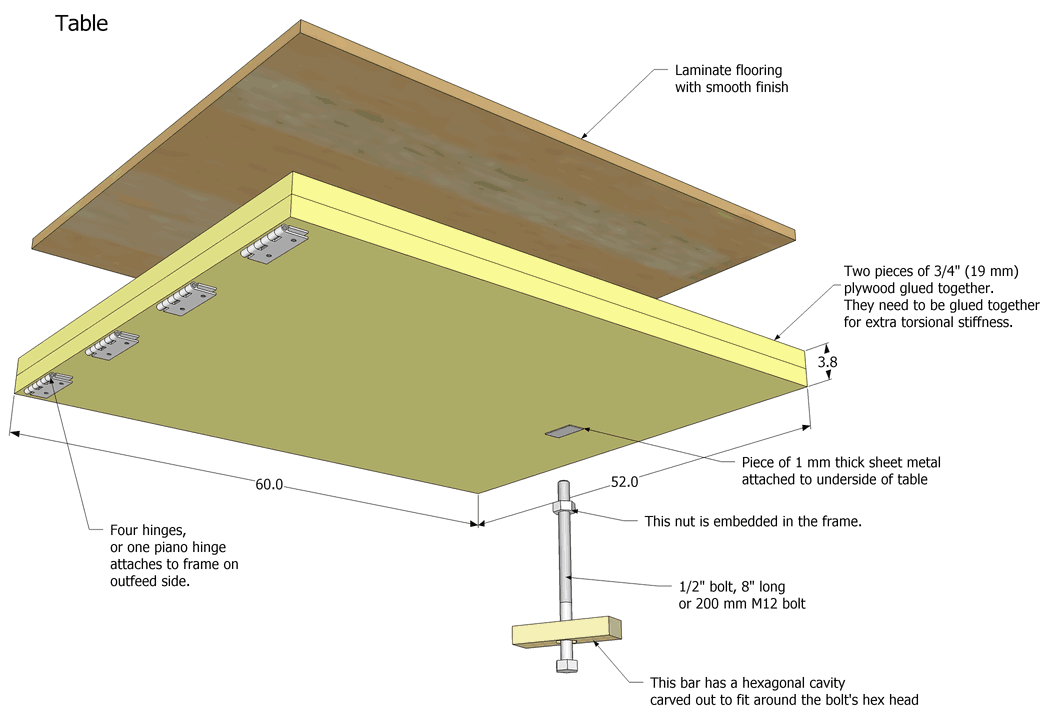
Table construction
The table is made of two pieces of 3/4" plywood sandwiched and glued together.
It's important that the layers are glued together throughout to give the table
torsional stiffness. Screwing the layers together would not be sufficient.
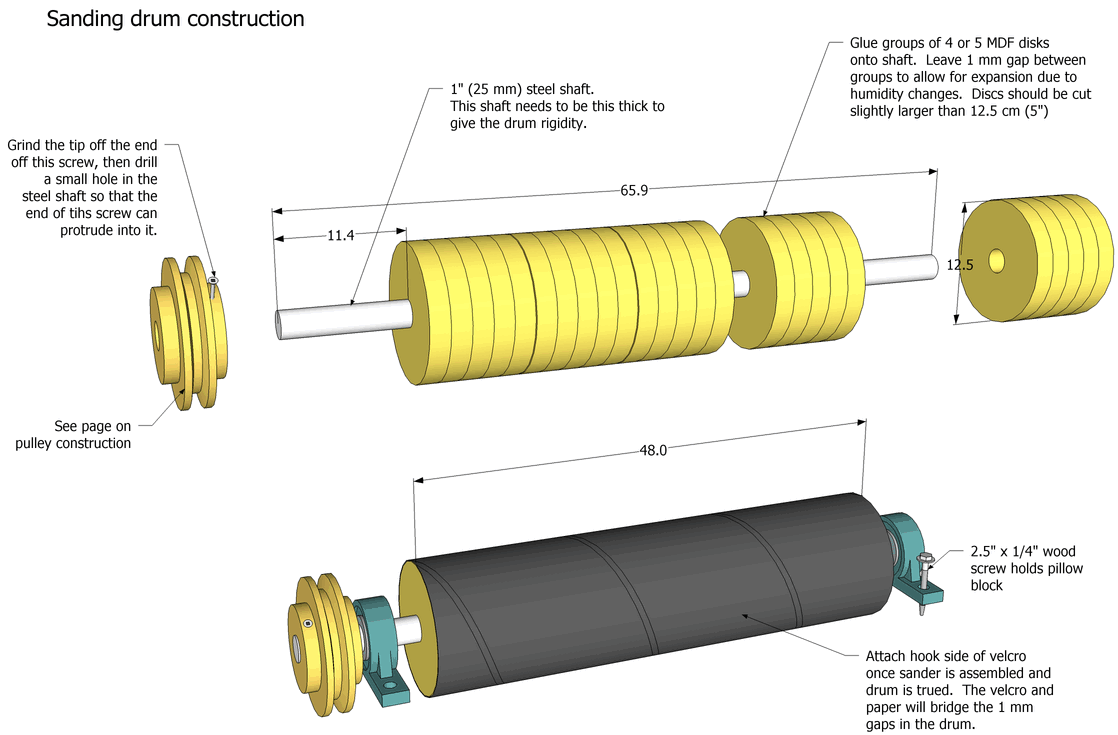
Drum construction
Pat's sander has MDF disks on a hollow 5/8" shaft. This makes the drum itself stiffer
than the shaft. However, MDF can't be trusted to stay completely straight, and Pat
has had to re-true his drum from time to time. So I changed
the design so that the drum's stiffness comes from a 1" shaft.
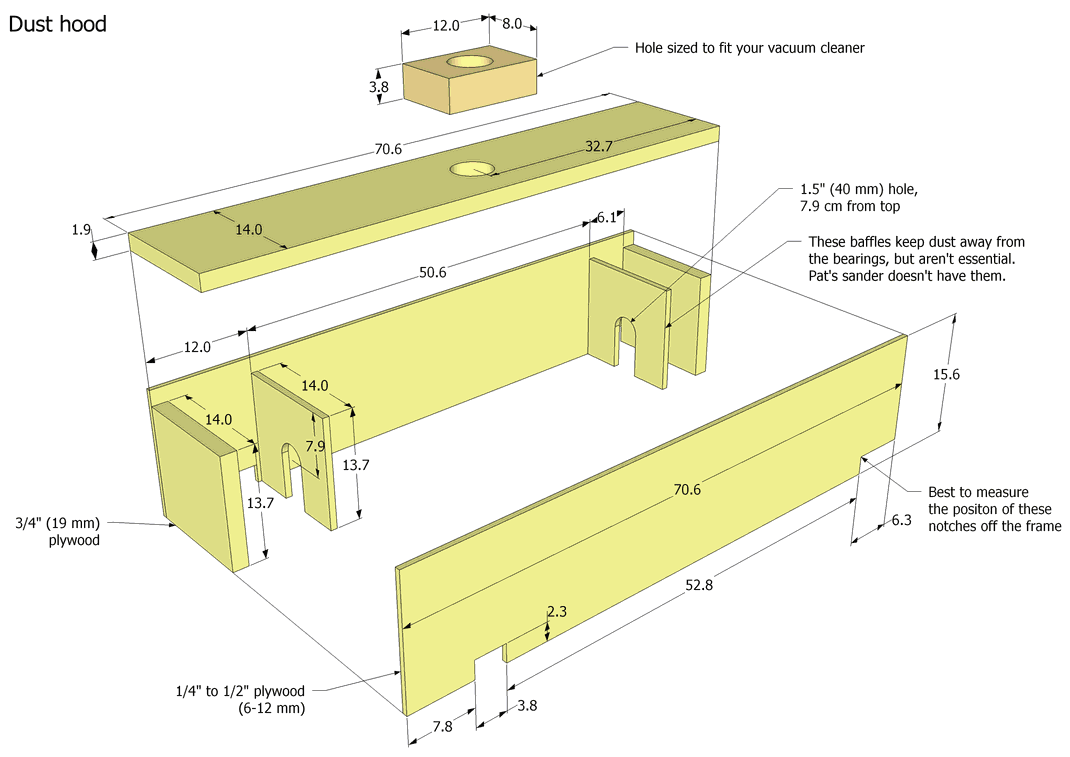
Dust hood
You may want to construct the dust hood before truing up the drum.
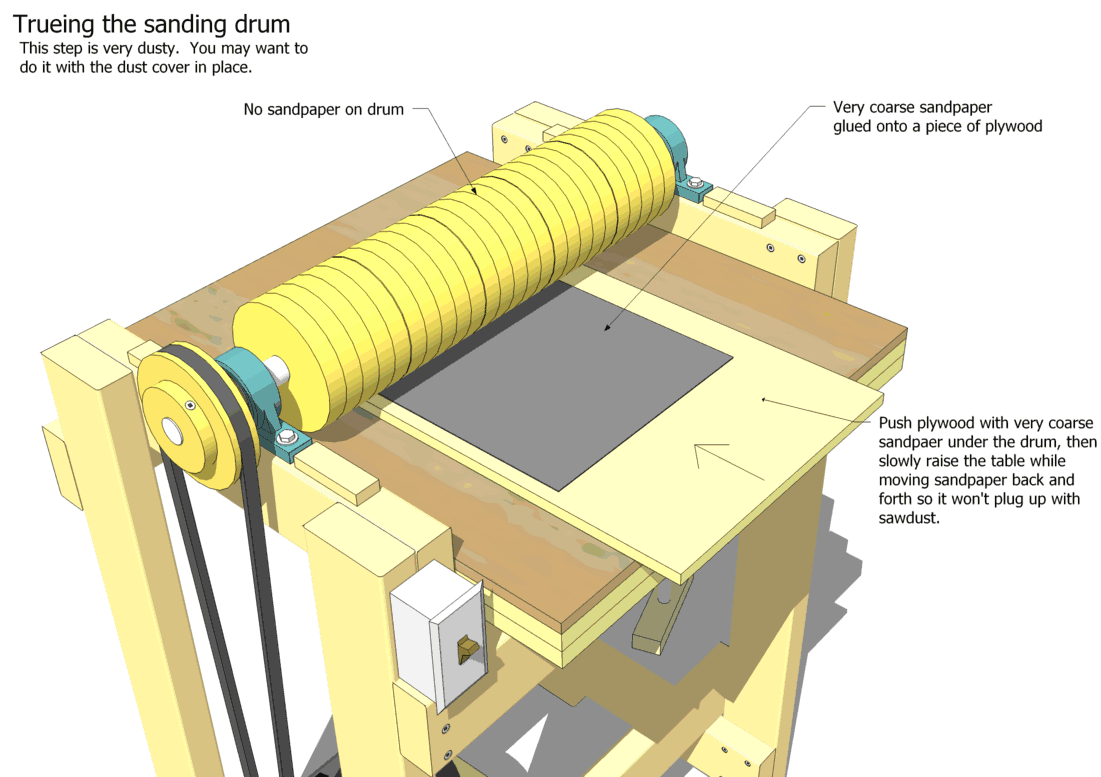
Truing up the drum
It's best to use the thickness sander itself to true up the drum. Instead of sandpaper on
the drum, a piece of sandpaper attached to a piece of plywood is slid under the drum to
sand the drum into true roundness.
Back to Browser optimzed version of the plans









